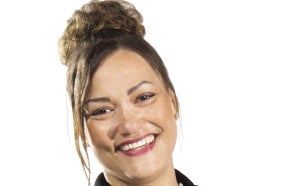To support a thriving multicultural organization, we must always consider the most vulnerable populations first.
Get Instant Access to This Article
Subscribe to Worcester Business Journal and get immediate access to all of our subscriber-only content and much more.
- Critical Central Massachusetts business news updated daily.
- Immediate access to all subscriber-only content on our website.
- Bi-weekly print or digital editions of our award-winning publication.
- Special bonus issues like the WBJ Book of Lists.
- Exclusive ticket prize draws for our in-person events.
Click here to purchase a paywall bypass link for this article.
To support a thriving multicultural organization, we must always consider the most vulnerable populations first. This includes historically underrepresented populations, who are in the minority in any given field of work. Beyond recruitment, anti-bias initiatives, and anti-discrimination laws in place to build more diverse workforces, we must create environments where the minority population feels a sense of belonging. This means intentionally focusing on equity, and not confusing it with equality.
A transformative multicultural organization celebrates diversity, supports inclusion, and strategically builds equitable structures, where employees from all backgrounds can thrive. Let’s not pretend we don’t notice differences between employees of different racial backgrounds, between men and women, and across the broad spectrum of diverse employees. Let’s acknowledge diversity and how differences might bring forward varying employee needs. Adapting to these needs will pay dividends in future of our organizations. We must change some things, which is hard for most people, in order to grow.
Leaders can lean into organizational diversity, equity, and inclusion, and they can change our organizations to become nimble and sustainable, with more capacity to support diverse workforces.
• Encourage your employees to be vulnerable and support them – Create an environment where there is psychological safety, civil discourse, and room for discussions. Encourage your employees to ask questions, share observations and experiences, ask for support, and be curious about diversity.
• Be mindful of how you show up for DEI – Your employees hear what you say, read what you write, and watch what you do. Your voice, values, and actions must align at all times.
• Learn, acknowledge, and work to mitigate your own bias – We all have biases, including you. We are less likely to pass on, or overlook in others, the biases we identify and work to overcome. Share the things you do to confront and overcome your biases.
• Know who you are – Get comfortable talking about the histories and experiences of the racial, ethnic, and cultural groups you and your family identify with. Talk about their contributions, and acknowledge the less flattering parts of those histories. Truth-telling bridges trust and healing.
• Develop cultural literacy by learning about others – Cultural humility is about not centering your own identity and understanding you have much to learn about people who have different cultural identities. Working to understand the journey of another person is the necessity of growing our empathy.
• Be honest about bigotry and oppression – Create and uphold policies that combat it. Employees notice exclusive and inequitable patterns, and they must feel confident that bigotry and oppression will not be tolerated.
• Be active – Don't be a bystander for DEI. Show your employees what it means to be a change agent. Whenever possible, connect the conversations you’re having to concrete actions.
• Plan for a marathon, not a sprint – It took hundreds of years to build up the oppressive structures DEI work must dismantle, and so the dismantling change will take time. It's okay to admit you don’t know everything. What’s important is you must work every day to elevate organizational belonging.
Organizational DEI is designed to help all employees feel supported and valued, comfortable and safe, so they can show up as their most authentic selves and focus on work. Elevating DEI supports an environment where employees can learn and grow, feel valued, and connect with one another. This creates a culture where employees more fluidly innovate at their greatest individual capacity, and as part of a team, which leads to better organizational outputs. DEI practitioners have the expertise to strategically execute organizational DEI through policy and practice. All leaders can support this work by leaning into the simple and impactful aforementioned actions above.
Bonnie J. Walker, a Worcester resident, is principal diversity & inclusion officer at MIT’s Lincoln Laboratory in Lexington.

